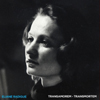 There are a number of significant omissions in Eliane Radigue's discography, as the sole available medium in the '60s and '70s (vinyl) could not contain her long-form drone works without ruining them by carving them up into multiple parts.  Consequently, this extended epic of ultra-minimalism is just now getting a formal release despite being premiered in 1974.  While its immediate impact is blunted considerably by the 37 years of drone/electronic music evolution that followed it, patient listening reveals a visionary and enveloping work that is unexpectedly timeless.
There are a number of significant omissions in Eliane Radigue's discography, as the sole available medium in the '60s and '70s (vinyl) could not contain her long-form drone works without ruining them by carving them up into multiple parts.  Consequently, this extended epic of ultra-minimalism is just now getting a formal release despite being premiered in 1974.  While its immediate impact is blunted considerably by the 37 years of drone/electronic music evolution that followed it, patient listening reveals a visionary and enveloping work that is unexpectedly timeless.
Transamorem-Transmortem is a single 77-minute piece that was originally intended as an installation, but was debuted at The Kitchen in the spring of 1974.  An actual performance was not possible, as Radigue's instrument of choice was an unwieldy ARP 2500 modular synthesizer (a rare and unusual pick for one’s primary instrument), which was essentially a small wall of dials. Also, her pieces famously tended to take years to compose and required lots of notes and diagrams.  In lieu of "live" performances, Radigue would painstakingly arrange and test speakers until they satisfactorily delivered sound to every inch of the room, then allow a reel-to-reel tape player to perform the piece for her.  I wish I had been there to hear how the audience reacted to something this radically minimal (probably quite well, actually, as Rhys Chatham was the curator at the time).
It is actually difficult to imagine a piece being any more minimal than this and still having people want to hear it, but this turned out to be quite absorbing once I hit upon the perfect combination of volume and focused attention.  Put simplistically, Transamorem-Transmortem is a single droning chord with a slow pulse beneath it and some prickly high-end frequencies above it.  The high-end keeps it from quite being comfortable and my initial impression was that it was all just too static to hold my interest.  I was wrong, of course, but there is no denying that this piece is unapologetically difficult.  It is difficult in the best sense though–I get no sense that Eliane set out to willfully alienate or startle anyone with her bold abandonment of conventional texture, melody, harmony, and rhythm.  Instead, she was just very far ahead of the pack in following her muse into largely uncharted territory.
The secret to appreciating the piece lies within Radigue's own philosophies about what she is trying to do with her music–namely, emulate water.  Transamorem-Transmortem is a sea of sound–it seems like an endless humming if listened to casually, much like a lake looks placid from a distance.  When listened to loudly and deeply, however, a vibrant and immersive microcosmic world of throbs and oscillations comes into focus.  Obviously, a 77-minute analog synthesizer buzz will appeal to very, very few people, but those that have the patience and focus needed to appreciate this will be amply rewarded.  The more I listen to this, the more I am awestruck by how aggressively and confidently Radigue discarded almost all of the things that people generally expect from music in pursuit of something both pure and perversely beautiful. This is music distilled to its very essence.
Samples:
 
Read More

